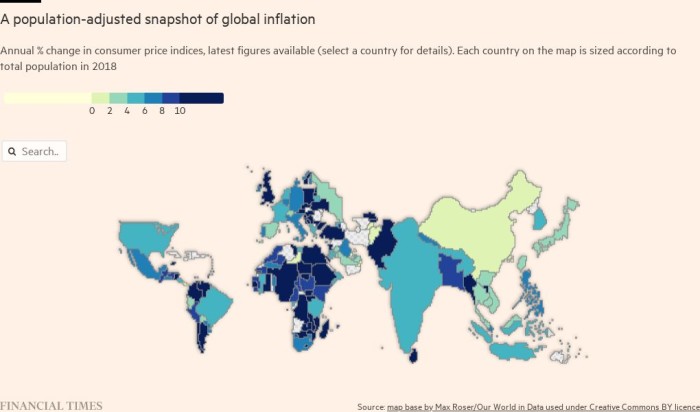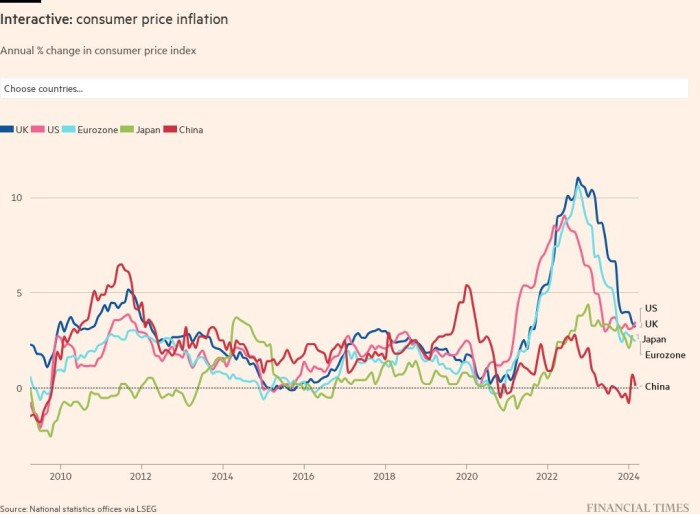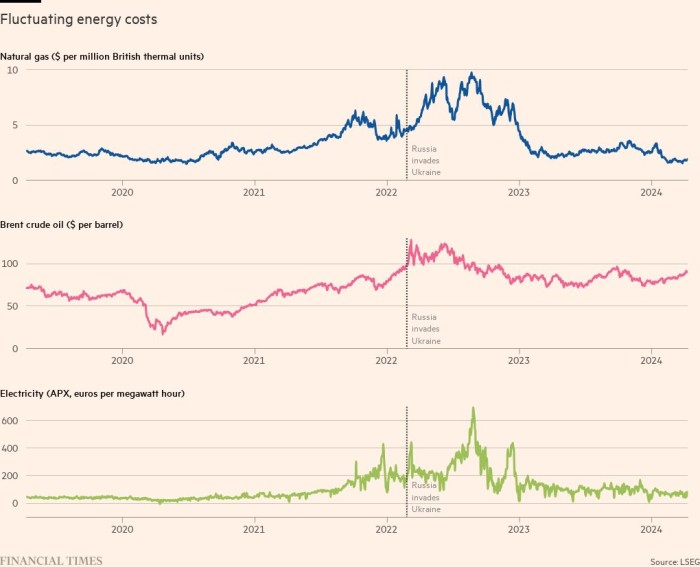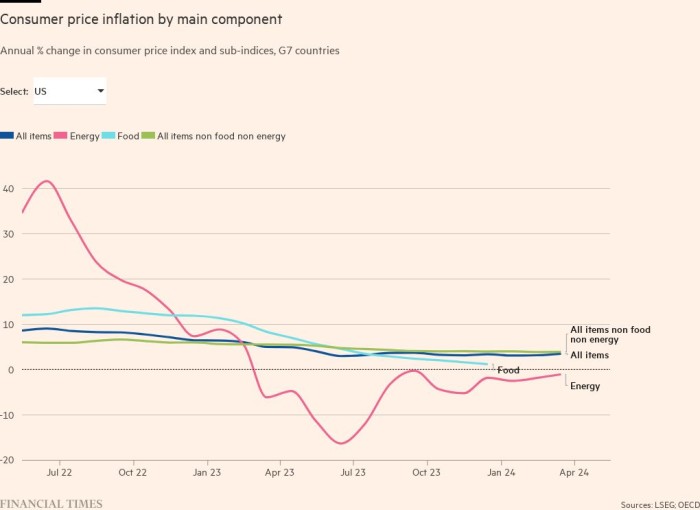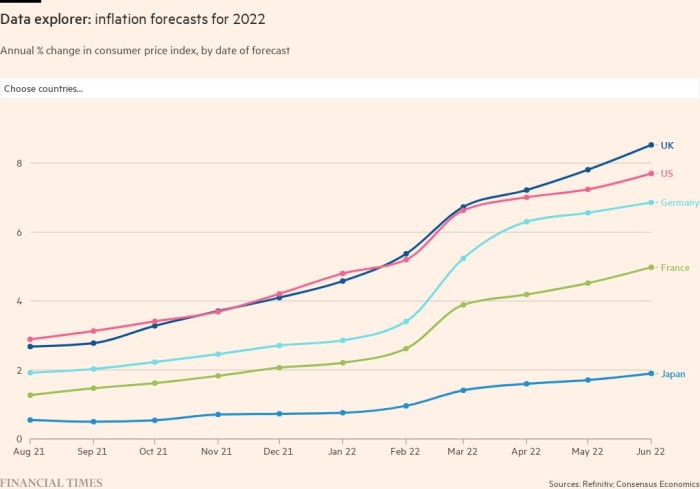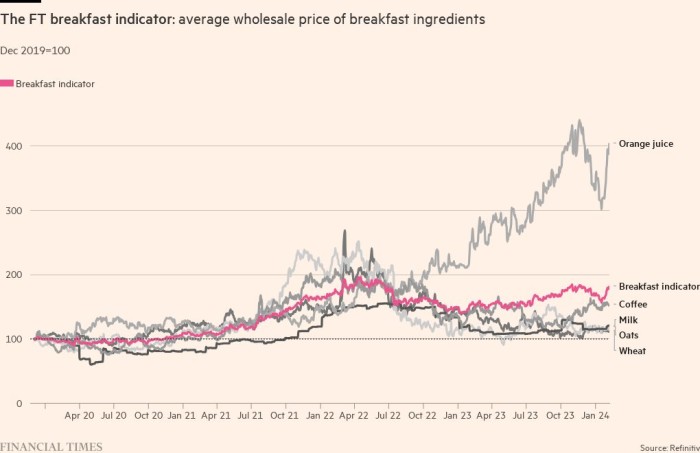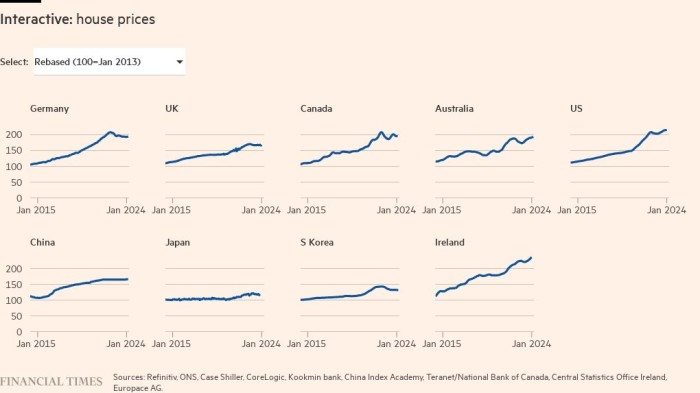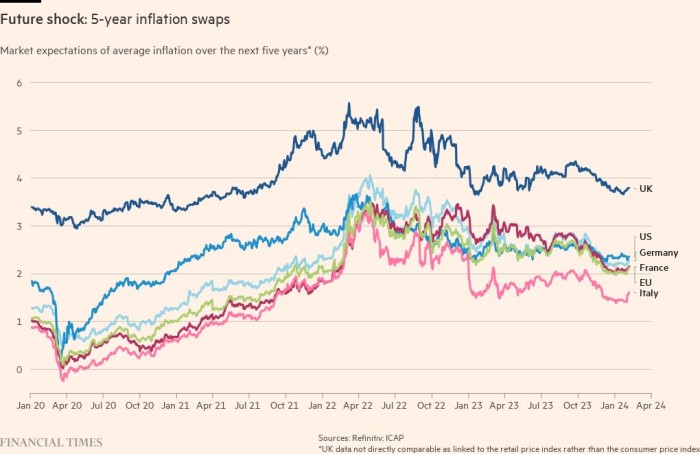Inflation has hit its highest level in decades for many countries, with the Ukraine conflict adding upward pressure on energy prices and squeezing households’ real incomes.
Russia’s invasion of its neighbour has pushed up energy and food prices at a time when many countries were already registering near-record rates of consumer price growth, leading some economists to fear a general return to the chronic inflation of the 1970s. High inflation is geographically broad-based even if East Asia has largely been an exception to the worldwide pattern.
This page provides a regularly updated visual narrative of consumer price inflation around the world, including economists’ expectations for the future.
It separates inflation into its main components, and shows what higher food prices mean for consumers and where investors think inflation is heading over the medium term. It also tracks house prices.
The rise in energy prices drove inflation in many countries even before Russia invaded Ukraine. Daily data show how the pressure has recently increased on oil, gas and electricity.
As a result, leading forecasters polled by Consensus Economics have steadily revised up their expected inflation figures for 2022 and 2023.
Higher inflation is spreading beyond energy to many other consumer items, especially in countries where demand is strong enough for businesses to pass on higher costs.
Rising consumer prices present a challenge for central banks, not least those in G7 countries which have a price stability target of about 2 per cent. To reach that goal, central banks can adjust monetary policy to curb demand.
But such tools are less effective in tackling inflation created by supply shortages. As the governor of the Bank of England, Andrew Bailey, has said, monetary policy “doesn’t get more gas, more computer chips, more lorry drivers”.
Rising prices limit what households can spend on goods and services. For the less well-off, that could lead to a struggle to afford basic needs, such as food and shelter.
Daily data on staple goods, such as the wholesale price of breakfast ingredients, provide an up-to-date indicator of the pressures faced by consumers. In developing countries, the wholesale cost of these ingredients has a larger impact on final food prices; food also accounts for a larger share of household spending.
Another point of concern is asset prices, especially for houses.
These soared in many countries during the pandemic, boosted by ultra loose monetary policy, homeworkers’ desire for more space and government income-support schemes.
The key debate among policymakers and economists is how long high inflation will last. While supporters of “team transitory” believe the cost pressures resulting from supply chain disruptions are expected to fade, supporters of “team permanent” fear higher prices could become embedded in the wider economy.
The war adds a lot of uncertainty to that debate, but markets’ expectations for inflation over the next five years are generally rising.


